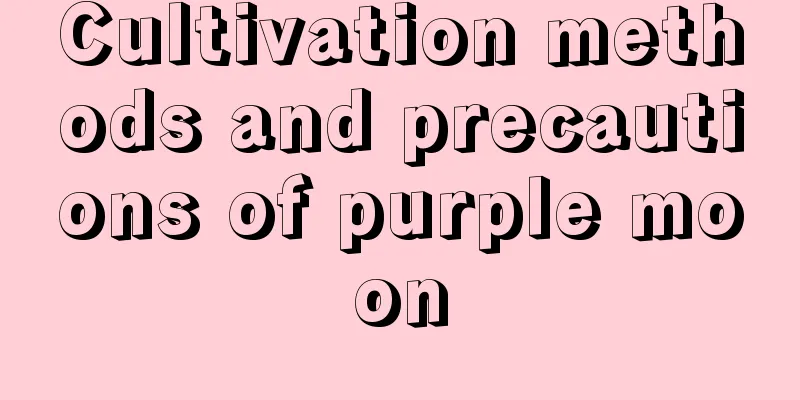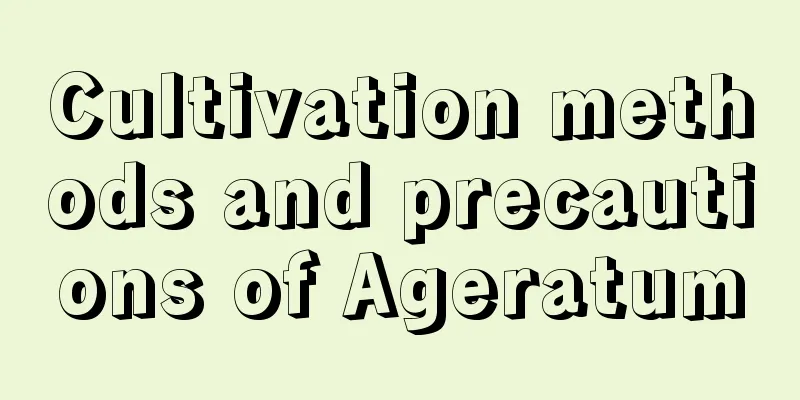Cultivation methods and precautions of purple moon

|
Purple Moon Plant, also known as Purple String Moon Plant, Purple Buddha Beads, etc., is a perennial succulent herb of the genus Asteraceae in the Asteraceae family. It is a very beautiful hanging succulent. So how do you grow this kind of succulent? What are the precautions? Let’s learn more about it below. Breeding methods and precautions - Image copyright belongs to All"> 1. Soil Purple Moon requires loose, permeable and fertile soil. It is recommended to use a mixture of peat, vermiculite, and perlite , and mix compound fertilizer into the soil before planting to ensure nutrition. 2. Lighting The growing environment of Purple Moon must have sufficient sunlight. When there is sufficient sunlight, the leaves will turn from green to purple. However, the hot summer is its dormant period, so it is still necessary to provide appropriate shade in the summer. 3. Temperature The suitable temperature for the growth of Purple Moon is 15℃-28℃. When the temperature in summer is higher than 30℃, Purple Moon will be in a semi-dormant state and should be avoided from exposure to the sun. The temperature should be kept above 5℃ in winter to avoid frost damage. 4. Watering Purple Moon Plant is not tolerant to waterlogging and needs sufficient water during the growing season. Just keep the soil slightly moist, and avoid water accumulation. When watering, do not water unless the soil is dry. Water thoroughly when the soil is dry. Do not water too frequently. Usually water once every 20 to 30 days. 5. Fertilization Purple Moonflower does not require much fertilizer . Generally, a thin layer of fertilizer is applied once a month during the plant's growth period, or a slow-release compound fertilizer is applied once in spring and autumn. 6. Notes (1) When the plant is growing vigorously, you can prune the dense or long branches appropriately to maintain the beautiful shape of the plant. (2) Check the plants regularly for diseases and insect pests, especially when there are signs of rot on branches and leaves, remove the rotten branches and leaves in time to avoid infection. (3) Repot the plant every 1-2 years to ensure the soil is loose and breathable. (4) The main method of propagation of Purple Moon is cuttings. After cuttings, be sure to place them in a bright and ventilated environment without direct sunlight, maintain a suitable temperature and wait for the cuttings to take root, then you can maintain them normally. In general, as a kind of succulent plant, Purple Moon Plant is relatively hardy and easy to grow. By following these basic breeding methods and precautions, even a novice can successfully raise the Purple Moon.
|
<<: Cultivation methods and precautions of island gardenia
>>: Cultivation methods and precautions of Sedum
Recommend
Winter management technology of Chinese honey bees
Chinese honey bee is the abbreviation of Chinese ...
How long does it take for rose cuttings to take root? How to make the cuttings survive?
Rose hydroponic cutting rooting time The time for...
Is the Ixora dropping leaves at home? After learning these four tricks, all problems will be solved!
1. What to do if the leaves of the Immortelle flo...
What are the common species of Crinum?
Common species of Crinum 1. Asian Crinum: The Asi...
How to make roses grow faster
1. How to make roses explode If you want the rose...
How much is a pound of watermelon? Watermelon photos
1. Price The prices of watermelons vary. Generall...
How to make fruit trees take root quickly
How to quickly root fruit trees 1. If you want fr...
What is the best month to plant honeysuckle? When is the best time to plant?
Which month is suitable for planting honeysuckle?...
How often should I water Dendrobium candidum?
How often should I water Dendrobium candidum? Den...
The breeding methods and precautions of Hongyun Dangtou
1. Flower soil The lucky charm plant is suitable ...
The fastest way to root magnolia cuttings
Magnolia cutting time Magnolia cuttings should be...
How to deal with the flowering of various varieties of succulents
Recently, many succulents such as "Akashi Ma...
The efficacy and function of osmanthus
1. Relieve cough and reduce phlegm Osmanthus flow...
The efficacy and function of black beans
1. Enhance Immunity The plant protein it contains...
How to clean a sprayer that has been used with herbicides (how to clean a sprayer that has been used with pesticides)
A netizen asked : I used a sprayer that had been ...









